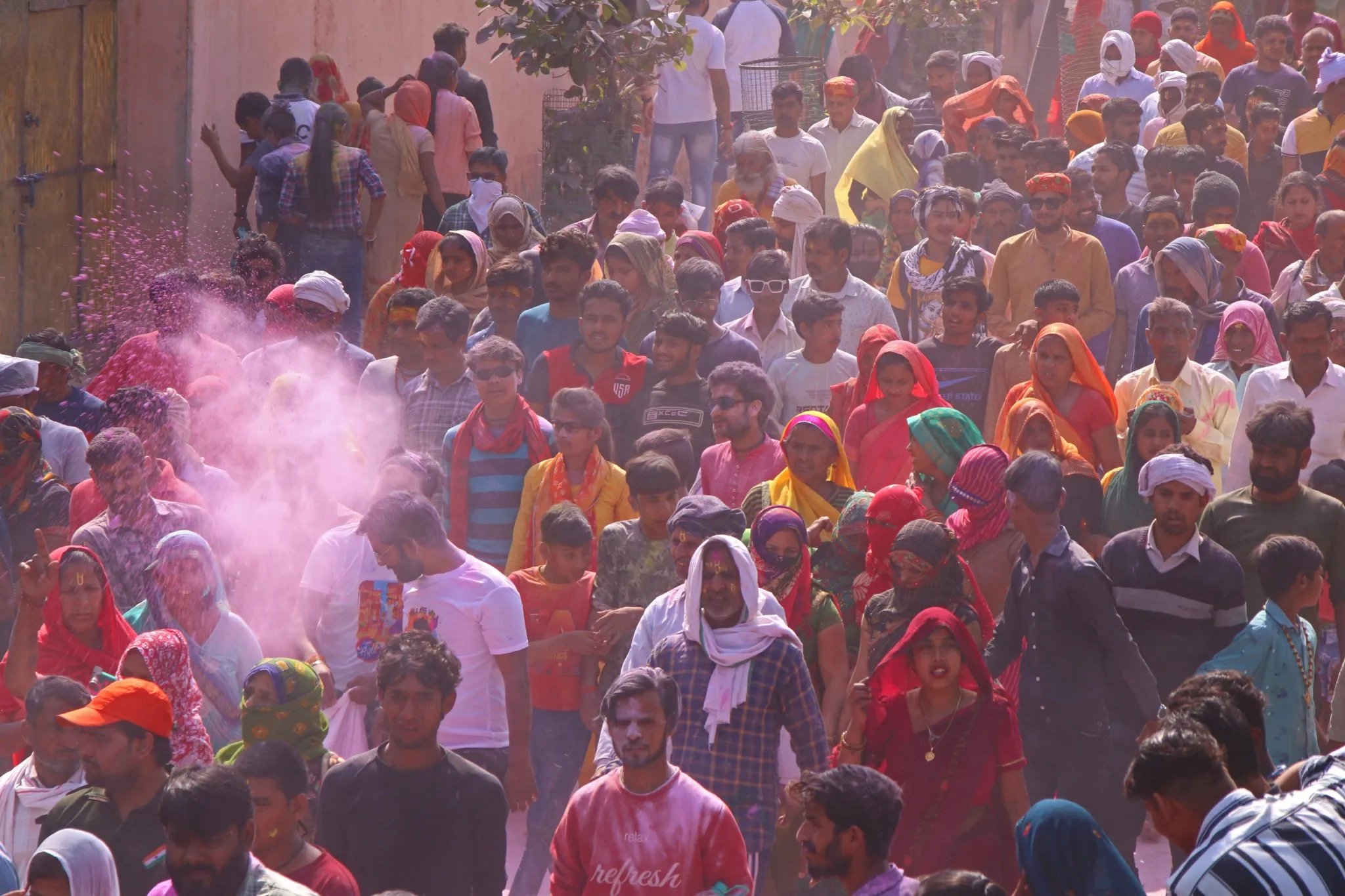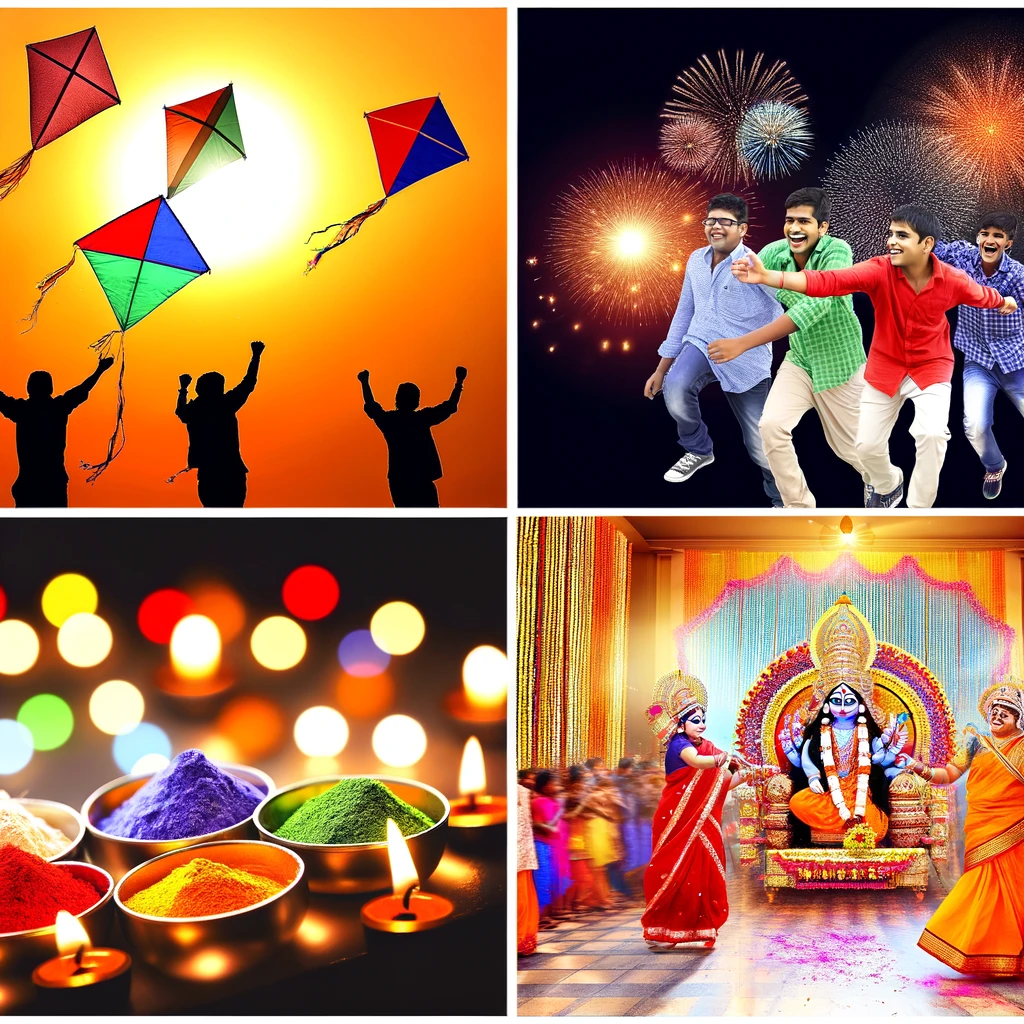Hindu Festivals and Fastings
Hinduism stands as one of the world’s oldest and most intricate systems of beliefs and practices, deeply rooted in spirituality, philosophy, culture, and science. At its core lies the concept of Dharma, a fundamental principle governing moral and ethical duties, cosmic order, and the interconnectedness of all life. It is within the framework of Dharma that Hindu festivals, with their multifaceted significance, find their roots.
The Role of Dharma in Scientific Advancements:
The essence of Dharma, encompassing righteousness, duty, and cosmic harmony, has been a guiding force in the evolution of Hindu thought and civilization. It is this profound understanding of Dharma that enabled ancient saints and sages to delve into the mysteries of the universe, developing sciences that were millennia ahead of their time.
Celebrating Hindu Cultural and Scientific Heritage Through Festivals:
Within the context of this rich cultural and scientific heritage, Hindu festivals emerge as vibrant expressions of tradition, spirituality, and communal harmony. Each festival, intricately woven into the fabric of Hindu life, carries deep symbolism and profound meaning, reflecting the values and beliefs of a civilization deeply rooted in Dharma.
Exploring the Connection: Hindu Festivals and Dharma:
In this essay, we will explore the intricate connection between Hindu festivals, the concept of Dharma, and the rich cultural and scientific developments that have shaped Hindu civilization. From the agricultural cycle to astronomical events, from the honoring of deities to the preservation of traditions, we will delve into the multifaceted tapestry of Hindu festivals, uncovering the timeless wisdom and profound insights that continue to inspire millions around the world.
Through this exploration, we will gain a deeper appreciation for the enduring legacy of Hinduism and its profound impact on the world’s cultural and scientific landscape.
Hinduism, with its rich tapestry of legends, and religious practices, celebrates an array of festivals that reflect the religion’s diversity, philosophies, and cultural richness. Here are some reasons why there are so many celebrations in Hinduism, as derived from various Hindu texts and traditions:
Hindu Festivals in the Agricultural Cycle:
Makar Sankranti/Pongal:
Celebrated in mid-January, marking the transition of the sun into Capricorn and the beginning of the harvest season.
Baisakhi/Vaisakhi:
Celebrated on April 13th or 14th, particularly significant for farmers as it marks the harvest festival in Punjab and other regions.
Raja Parba:
Celebrated in Odisha, typically in June, to mark the onset of the monsoon season and celebrate womanhood and fertility.
Onam:
Celebrated in Kerala, usually in August or September, a harvest festival commemorating the return of King Mahabali and thanking God for the harvest.
Astronomical Events: Celebrating Hindu Festivals:
Makar Sankranti/Pongal:
Celebrated in mid-January, it marks the transition of the sun into the zodiac sign of Capricorn (Makara), an astronomical event.
Vasant Panchami:
Celebrated in late January or early February, it marks the beginning of spring and is associated with the worship of Saraswati, the goddess of knowledge, arts, and learning. (Magha Shukla Paksha Panchami)
Akshaya Tritiya:
Celebrated in April or May, it is believed to be an auspicious day for new beginnings and ventures, as it marks the third lunar day of the bright half of the Hindu month of Vaishakha, Shukla Tritiya.
Honoring Hindu Deities Through Festivals
Navaratri/Durga Puja:
Celebrated over nine nights, it honors the goddess Durga in her various forms and manifestations, Ashwin Shukla Paksha.
Ganesh Chaturthi:
Celebrated in honor of Lord Ganesha, the elephant-headed god of wisdom and prosperity (Bhadrapada Shukla Chaturthi).
Janmashtami:
Celebrated to commemorate the birth of Lord Krishna, the eighth avatar of Lord Vishnu (Bhadrapada Krishna Ashtami).
Maha Shivaratri:
Observed in honor of Lord Shiva, one of the principal deities of Hinduism (Magha Krishna Chaturdashi).
Historical Significance:.
Rama Navami:
Celebrated to commemorate the birth of Lord Rama, the seventh avatar of Lord Vishnu, who is revered for his righteousness and adherence to dharma (Chaitra Shukla Navami).
Krishna Janmashtami:
Commemorates the birth of Lord Krishna, who is considered one of the most powerful incarnations of Lord Vishnu, and his role in the Mahabharata and the Bhagavad Gita (Bhadrapada Krishna Ashtami).
Hanuman Jayanti:
Celebrated to honor the birth of Lord Hanuman, the devoted disciple of Lord Rama and an embodiment of devotion, strength, and loyalty (Chaitra Krishna Trayodashi).
Vijayadashami/Dussehra:
Marks the victory of Lord Rama over the demon king Ravana, symbolizing the triumph of good over evil (Ashwin Shukla Dashami).
Life Cycle Rites:.
Namakarana:
Also known as Namkaran or Namakaran Sanskar, this ceremony is the naming ceremony for newborns.
Annaprashana:
This is the first feeding ceremony, usually performed when a baby is around six months old, where the child is fed solid food for the first time.
Mundan/Sishu Tonsure:
It is the ritual of shaving the head of a child for the first time, usually performed in the first or third year.
Upanayana:
Also known as the sacred thread ceremony, it’s a rite of passage for young boys, marking their formal entrance into student life and initiation into Vedic studies.
Vivaha:
This is the Hindu wedding ceremony, which is one of the most significant rites of passage in Hindu culture.
Antyesti:
Also known as the funeral rites, this is the final sacrament in a Hindu person’s life, involving cremation or burial ceremonies.
Spiritual Concepts:
Guru Purnima:
Celebrated to honor and express gratitude towards spiritual and academic teachers, it’s particularly significant in Hindu, Jain, and Buddhist traditions (Ashadha Purnima).
Mahashivaratri:
Dedicated to Lord Shiva, it symbolizes overcoming darkness and ignorance in life and attaining spiritual enlightenment.
Vijayadashami/Dussehra:
Celebrates the victory of good over evil, particularly the triumph of Lord Rama over Ravana in the Ramayana, representing the victory of righteousness and truth.
Deepavali/Diwali:
Often called the festival of lights, it symbolizes the victory of light over darkness, knowledge over ignorance, and the dispelling of spiritual darkness.
Navaratri:
A nine-night festival dedicated to the worship of the divine feminine in various forms, it symbolizes the triumph of good over evil through devotion and spiritual practices.
Victory of Good over Evil: Hindu Festivals Symbolizing Triumph:
Dussehra (Vijayadashami):
Celebrated at the end of Navaratri, it commemorates the victory of Lord Rama over the demon king Ravana, symbolizing the triumph of good over evil.
Deepavali/Diwali:
Often referred to as the festival of lights, it celebrates the victory of light over darkness, good over evil. It commemorates Lord Rama’s return to Ayodhya after defeating Ravana and signifies the triumph of righteousness.
Holika Dahan:
Holi, like Dussehra and Diwali, represents the triumph of good over evil, as it celebrates the victory of devotion over ego and the dispelling of darkness with light.

(https://hinduinfopedia.in/wp-content/uploads/2024/03/52723133100_cf477b13e3_o_holi_Festival_Flickr.webp) [Credit https://flickr.com]
Following Holika Dahan, the festival of colors, Holi, is celebrated with fervor, symbolizing joy, love, and the triumph of good over evil through the playful splashing of vibrant hues
Renewal and Cleansing:.
Chhath Puja:
This ancient Hindu festival is dedicated to the Sun God (Surya), seeking blessings for prosperity, well-being, and progress. It involves rituals performed near water bodies, primarily sunrise and sunset, and includes fasting, bathing, and offering prayers to the Sun God. Chhath Puja is also regarded as a festival of cleansing and renewal, as devotees purify themselves through fasting, prayer, and immersion in water.
Community and Family Bonding:.
Raksha Bandhan:
Also known as Rakhi, this festival celebrates the bond between brothers and sisters. Sisters tie a Rakhi (a sacred thread) on their brothers’ wrists as a symbol of love and protection, and brothers pledge to protect their sisters. It strengthens the bond between siblings and is also celebrated among cousins and other relatives, emphasizing the importance of family ties and unity within the community.
Teaching and Preservation of Teachings and Traditions:.
Guru Purnima:
Celebrated to honor spiritual and academic teachers, Guru Purnima emphasizes the importance of learning, wisdom, and the transmission of knowledge. It is a day dedicated to expressing gratitude and reverence towards gurus (teachers) who impart valuable teachings, including textual stories and traditional practices, thus preserving and passing on Hindu traditions to future generations.
Seasonal Based Hindu Festivals
Makar Sankranti/Pongal:
Celebrated in mid-January, Makar Sankranti marks the transition of the sun into the zodiac sign of Capricorn (Makara), signifying the end of winter and the beginning of longer days. Pongal, a festival celebrated predominantly in South India during this time, also marks the harvest season and the arrival of spring. It is a festival that rejoices in the changing seasons and the onset of agricultural activities.
Lunar based Hindu Festivals And Fastings
Amavasya (New Moon):
- Amavasya is observed every month when the moon is not visible in the sky. It is considered an auspicious day for performing rituals dedicated to ancestors and seeking their blessings.
- Some communities observe Amavasya fasts, particularly for Pitru Tarpanam (rituals for ancestors).
Purnima (Full Moon):
- Purnima is celebrated every month when the moon is full and bright in the sky.
- It’s considered auspicious for various rituals, including worshiping deities and performing religious ceremonies.
- Some people observe fasts on Purnima days and visit temples to seek blessings.
Ekadashi (11th Day After Full or New Moon):
- Ekadashi occurs twice in a Hindu lunar month, typically on the 11th day after the full moon and the new moon.
- It is a day dedicated to fasting and prayers. Observing fasts on Ekadashi is believed to purify the mind and body.
- Devotees abstain from grains and certain other food items on Ekadashi.
Pradosham (Trayodashi Tithi):
- Pradosham occurs twice in a lunar month, typically on the 13th day after the full moon and the new moon.
- It is considered an auspicious time for worshiping Lord Shiva and seeking his blessings.
- Some devotees observe fasts and perform special prayers during Pradosham.
Sankashti Chaturthi (4th Day After Full Moon):
- Sankashti Chaturthi is celebrated on the fourth day after the full moon.
- It is dedicated to Lord Ganesha, and devotees observe fasts and perform prayers to seek his blessings and remove obstacles.
Masik Shivaratri (Monthly Shivaratri):
- Masik Shivaratri is observed every month on the 14th day of the lunar fortnight (Krishna Paksha) or the 14th day of the waxing moon (Shukla Paksha).
- It is dedicated to Lord Shiva, and devotees observe fasts and perform prayers throughout the night.
Hindu Festivals Summarized
In conclusion, the abundance of festivals within Hinduism serves as a source of constant inspiration, motivation, and resilience for its followers. These festivals, deeply rooted in the principles of Dharma and reflecting the rich cultural, philosophical, and scientific heritage of Hindu civilization, play a crucial role in keeping Hindus connected to their traditions and beliefs. The continuous celebration of festivals fosters a sense of community, belonging, and spiritual fulfillment among Hindus, reinforcing their commitment to rituals and practices that have endured through millennia.
Moreover, the diverse array of festivals provides Hindus with multiple opportunities throughout the year to express their devotion, gratitude, and reverence to the divine, fostering a deep-seated spiritual connection and sense of purpose in their lives. This unwavering commitment to their religious traditions and rituals has contributed to the resilience of Hinduism, thwarting attempts by certain Abrahamic religions to convert its followers.
The vibrant tapestry of festivals within Hinduism serves as a testament to the enduring strength, vitality, and adaptability of this ancient religion. As Hindus continue to celebrate their festivals with fervor and devotion, they not only honor their cultural heritage but also reaffirm their commitment to the timeless principles of Dharma, ensuring that the legacy of Hinduism perseveres for generations to come.
Feature Image: The image is a vibrant collage of four segments, each depicting a significant Hindu festival. In the top-left, joyful silhouettes of people are flying kites under a bright sun, capturing the essence of Makar Sankranti/Pongal. The top-right portrays a group of individuals against a backdrop of dazzling fireworks and glowing lamps, symbolic of Diwali/Deepavali. In the bottom-left, a burst of colored powders fills the air as people celebrate Holi with enthusiasm. The bottom-right shows an intricately decorated idol of Goddess Durga, with devotees dancing in celebration of Navaratri/Durga Puja. (https://hinduinfopedia.in/wp-content/uploads/2024/03/Four_important_Hindu_festivals_Holi_Makar_sankranti_Diwali_Navratra.webp)
Hindi Version
